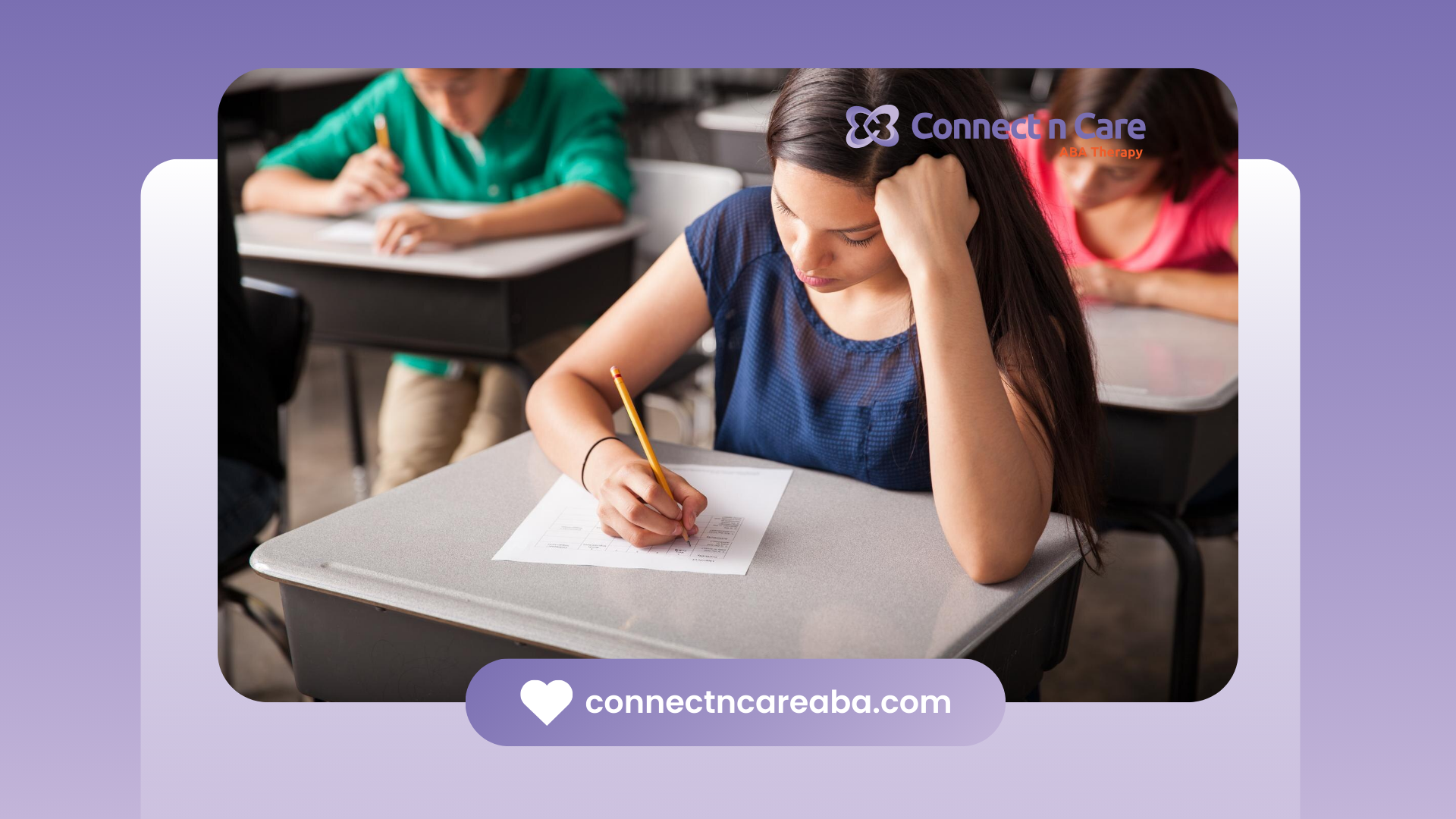Every child has a unique way of learning, and this is especially true for autistic children. Some absorb information best through visuals, while others respond more effectively to hands-on experiences or structured routines. Parents and therapists often wonder
“What is the best way to teach an autistic child?”
A mother once shared her frustration when her autistic son, who struggled with verbal communication, seemed uninterested in traditional teaching methods. However, once she introduced pictures and visual schedules, he began to engage and express himself in ways she hadn’t seen before. Another parent found that their child thrived when given clear, step-by-step demonstrations instead of verbal instructions.
These experiences highlight the importance of understanding different autism learning styles and tailoring educational approaches accordingly. Whether in a classroom, therapy session, or at home, identifying how an autistic child processes information can make a significant difference in their ability to learn and grow.
Understanding Autism Learning Styles
Autistic children often process information differently from their neurotypical peers. While there isn’t a single “one-size-fits-all” learning style, researchers and therapists have identified several common patterns in how autistic individuals learn.
Understanding these learning styles can help parents and educators create more effective teaching strategies that align with a child’s strengths.
Why Understanding Learning Styles is Crucial
- Helps children absorb and retain information more effectively
- Reduces frustration and anxiety associated with learning difficulties
- Encourages engagement and motivation
- Builds confidence in communication and problem-solving
- Allows educators and therapists to tailor autism interventions that match a child's strengths
The Four Main Autism Learning Styles
1. Visual Learners
Many autistic children are visual learners, meaning they understand and retain information better when it is presented through images, diagrams, or demonstrations rather than spoken words.
Signs That a Child is a Visual Learner
- Prefers pictures, videos, or charts over verbal instructions
- Struggles with understanding spoken language but responds well to written words
- Enjoys puzzles, drawing, or visually engaging activities
- Uses picture-based communication tools like PECS (Picture Exchange Communication System)
How to Support Visual Learners
- Use visual schedules to outline daily routines
- Incorporate flashcards, picture books, and illustrated storyboards
- Demonstrate tasks step-by-step instead of explaining them verbally
- Leverage technology such as educational videos and interactive apps
2. Auditory Learners
Some autistic children learn best through listening. They may excel when information is presented through songs, verbal storytelling, or discussions.
Signs That a Child is an Auditory Learner
- Shows strong memory for songs, rhymes, or spoken words
- Responds well to verbal prompts and instructions
- Enjoys listening to audiobooks or music
- Echoes or repeats words (echolalia), which can sometimes be part of their learning process
How to Support Auditory Learners
- Use clear, concise verbal instructions
- Introduce learning through songs, rhymes, and rhythmic speech
- Encourage storytelling and verbal interaction
- Use audio cues, such as alarms or spoken reminders, to reinforce routines
3. Kinesthetic Learners (Hands-On Learners)
Kinesthetic learners absorb information best through movement and hands-on experiences. They often struggle with sitting still for long periods and benefit from active, sensory-based learning.
Signs That a Child is a Kinesthetic Learner
- Learns better through physical activities than passive listening
- Enjoys hands-on projects, crafts, or experiments
- Struggles with traditional classroom settings that require sitting still
- Uses gestures, touch, or movement to understand concepts
How to Support Kinesthetic Learners
- Incorporate movement into learning (e.g., jumping while counting, using hands to shape letters)
- Provide sensory-friendly activities like sand play, playdough, or textured objects
- Use real-life experiences, such as visiting a grocery store to learn about money
- Implement strategies that use reinforcement through action-based learning
4. Logical/Sequential Learners
Some autistic individuals thrive on structure and logic. They prefer patterns, rules, and step-by-step processes to understand new concepts.
Signs That a Child is a Logical Learner
- Enjoys organizing and categorizing objects
- Shows interest in numbers, sequences, or logical patterns
- Prefers structured routines and predictability
- Struggles with abstract or imaginative learning methods
How to Support Logical Learners
- Use step-by-step instructions and clear sequences
- Introduce math, science, and pattern-based activities
- Provide structured schedules and consistent routines
- Encourage problem-solving games, puzzles, and coding exercises
How ABA Therapy Adapts to Different Learning Styles
Applied Behavior Analysis (ABA) therapy is one of the most effective ways to support autistic children because it tailors interventions to their specific learning styles. ABA therapists assess a child’s strengths and challenges and develop personalized strategies to help them learn effectively.
How ABA Therapy Supports Different Learners
- For Visual Learners: ABA therapists use visual supports, token boards, and social stories to reinforce concepts.
- For Auditory Learners: Therapists integrate verbal cues, music, and storytelling into ABA sessions.
- For Kinesthetic Learners: ABA sessions include interactive tasks, role-playing, and hands-on reinforcement strategies.
- For Logical Learners: ABA methods emphasize structured routines, clear expectations, and systematic teaching approaches.
By using individualized interventions, ABA therapy ensures that every child receives the support they need in a way that aligns with their natural learning style.
Conclusion
Every autistic child learns in their own way, and understanding their learning style can be a game-changer for their education and personal development. Whether they thrive with visuals, sounds, movement, or logical structures, adapting teaching methods to their needs can boost their confidence and help them reach their full potential.
At Connect N Care ABA, we believe in providing personalized ABA therapy that aligns with each child's learning style. Our dedicated team works closely with families to develop customized strategies that make learning engaging, effective, and fun. Contact us today to learn how we can support your child’s journey toward growth and independence.
FAQs
Can an autistic child have more than one learning style?
Yes, many autistic children exhibit a mix of learning styles. For example, a child may primarily be a visual learner but also benefit from kinesthetic activities.
What if my child doesn’t fit into any of these learning styles?
Not all autistic children fit neatly into one category. Some may have unique ways of learning that combine multiple styles or require entirely different approaches. The key is to observe what engages them and adapt teaching strategies accordingly.
How can I identify my child’s learning style?
Parents and therapists can identify a child's learning style by observing how they interact with information. Do they respond best to pictures, spoken instructions, or physical activities? Keeping track of what helps them learn can provide valuable insights.
Sources:
- https://www.whitbyschool.org/passionforlearning/auditory-visual-and-kinesthetic-helping-children-succeed-through-different-learning-styles
- https://pubmed.ncbi.nlm.nih.gov/26070275/
- https://pmc.ncbi.nlm.nih.gov/articles/PMC5206282/
- https://pmc.ncbi.nlm.nih.gov/articles/PMC3155869/
- https://autism.org/learning-styles-autism/









